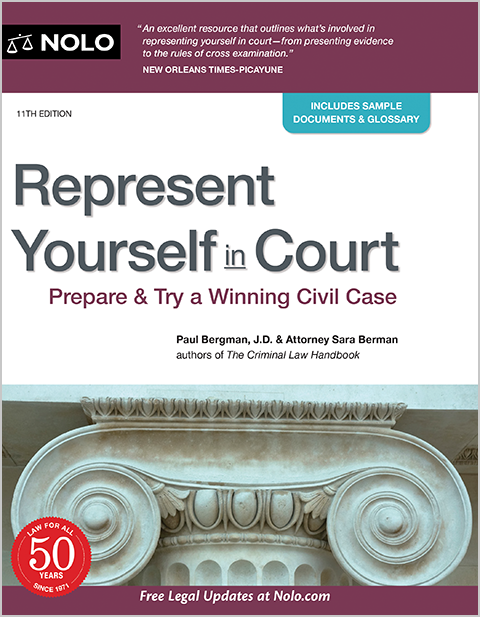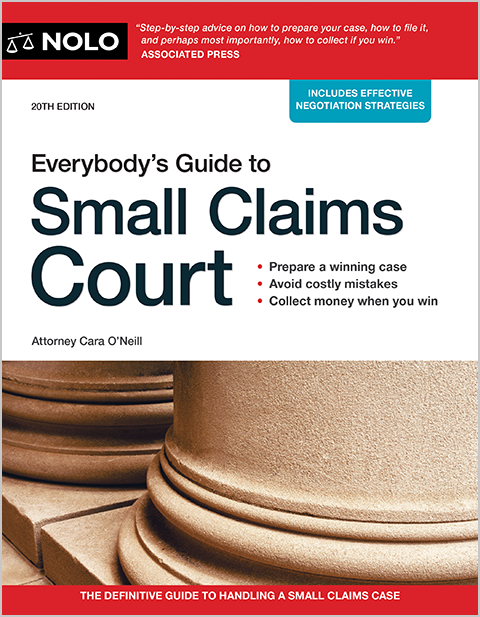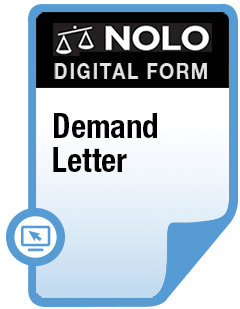You got a Minnesota money judgment. Now it's time to collect. We explain how to record Minnesota judgment liens, collect on a lien, extend your judgment, and more.
You went to court and got a judgment that says you're entitled to money from the party you sued, now called a "judgment debtor." What comes next? How can you—the judgment creditor—collect the money you're due? That's the focus of this article.
One way to collect is by putting judgment liens on the judgment debtor's Minnesota property. After a quick review of how judgment liens differ from judgments, we'll turn our attention to the specifics of Minnesota law. In particular, we cover:
- the kinds of property subject to Minnesota judgment liens
- how you put judgment liens on Minnesota property
- how long your judgment lien lasts, and
- the ways you can turn your judgment lien into money.
If you want some background information, here's more about how court judgments are collected.
- What's the Difference Between a Judgment and a Judgment Lien?
- Kinds of Property Subject to Minnesota Judgment Liens
- Property Exempt From Minnesota Judgment Liens
- How to Attach Minnesota Judgment Liens
- How Long Does a Minnesota Judgment Last?
- How Do You Turn a Minnesota Judgment Lien Into Money?
- Next Steps
What's the Difference Between a Judgment and a Judgment Lien?
A judgment is a court order that says a judgment creditor is legally entitled to a sum of money from a judgment debtor. But a judgment, standing alone, isn't self-enforcing. That is, you can't take a judgment to your county sheriff's office and demand that the judgment debtor's real estate be sold to pay you.
If you want to seize and sell the judgment debtor's property, you first have to attach your judgment to specific items of property. That's what a judgment lien does. As we discuss later, when your judgment is properly docketed or filed, a judgment lien attaches to the debtor's land and buildings. Once that's done, you can look for ways to turn your judgment into cold, hard cash.
Kinds of Property Subject to Minnesota Judgment Liens
In Minnesota, you can attach judgment liens only to real estate, meaning land, buildings, and other improvements. A properly docketed or filed judgment attaches a lien to real estate the judgment debtor:
- presently owns, and
- acquires later, as long as your judgment lien is still good.
No Liens on Personal Property
You can't put judgment liens on Minnesota personal property—cars, artwork, antiques, electronics, household furnishings, and the like. But that doesn't mean a judgment debtor always gets to keep their autos, boats, and other big ticket items. Even without judgment liens, there's a way to have the sheriff seize personal property.
If you're considering this step, speak to a Minnesota collection lawyer first. They can tell you whether it's worth your time and expense to go after the judgment debtor's personal property—and there's a good chance it won't be. If it's likely to be worthwhile, they'll guide you through the process.
Property Exempt From Minnesota Judgment Liens
Like all states, Minnesota exempts some property—both real and personal—from the reach of creditors. Dollar amounts mentioned here represent the maximum value of the debtor's exempt equity in the property, which might not be the same as the property's market value.
Here are a few examples:
- a homestead, consisting of a house occupied as a dwelling and up to 160 acres, all worth as much as $510,000 ($1,275,000 if used primarily for agricultural purposes), adjusted for inflation every two years
- one motor vehicle valued at up to $10,000 (more if modified for someone with a disability)
- as much as $12,150 worth of household furniture, appliances, radios, televisions, tablets, printers, cell phones, or smart phones
- a retirement account valued at up to $81,000, and
- a maximum of $13,500 in books, equipment, and tools used by the judgment debtor in a trade or business.
How to Attach Minnesota Judgment Liens
The way you attach a judgment lien depends on whether the real estate you want to attach is:
- abstract property, or
- registered land.
Abstract Property
Most Minnesota property, including most rural property, is called "abstract property." An abstract property is one where the history of ownership and all encumbrances—mortgages, tax liens, homeowners' association liens, and the like—are recorded on a document called an abstract of title.
To attach judgment liens to an abstract property, follow these steps.
- Prepare a judgment creditor's affidavit. You (or your lawyer) must prepare an affidavit that states the judgment debtor's full name, occupation, place of residence, post office address, and—in some cases—the judgment debtor's residential and business street addresses.
- File the affidavit. File the judgment creditor's affidavit with the court administrator for the court that entered the judgment. The court administrator will "docket" (record) the judgment. Once that's done, you've got a judgment lien on the judgment debtor's real estate in that county.
- File docket transcripts in other counties. To attach judgment liens in other counties, file a docket transcript (a summary of your original docketed judgment) with the court administrator in each county where the judgment debtor owns real estate. The court administrator will docket your judgment, attaching your lien.
Similar rules apply to judgments entered by federal courts sitting in Minnesota.
Registered Land
Registered land is sometimes called "Torrens property." Ownership of registered land is represented by a certificate of title that shows all encumbrances against the property. Each owner has their own certificate and when ownership changes hands, a new certificate is issued.
Here are the steps to attach a judgment lien to registered land.
- Follow steps for abstract property. Start by completing all the steps necessary to attach a lien to abstract property.
- Get a certified copy of the judgment. Ask the court administrator of the court that entered your judgment for a certified copy of the judgment. You'll need one copy for each property to which you want to attach a lien.
- Prepare a statement. For each property you want to attach a lien to, you must prepare a written statement with a description of the property, along with a reference to the certificate of title.
- File the certified copy and the statement. File a certified copy of the judgment and the statement with the county's registrar of titles, also called the county recorder. Once filed, you have a judgment lien against all the judgment debtor's real estate in that county.
When Does a Minnesota Judgment Lien Expire?
A Minnesota judgment lien expires 10 years from the date the judgment upon which it is based was entered. Suppose, for example, that you got a money judgment on June 1, 2016. On July 1, 2018, you attached a Minnesota judgment lien. Your lien expires on June 1, 2026.
If you haven't collected your judgment when your lien expires, you'll need to renew the judgment (see below). Then you can re-attach new judgment liens, following the procedures described above.
How Long Does a Minnesota Judgment Last?
A Minnesota judgment is good for 10 years from the date of entry. Once it expires, a judgment is legally dead. Barring extraordinary circumstances, you can't take any action to collect it. You've lost the right to the money you were due.
Renewing a Minnesota Judgment
You can renew a Minnesota judgment—extend its life for another 10 years—but you must act before the judgment's 10-year term expires. To do that, you file a new lawsuit, accusing the judgment debtor of having failed to pay the judgment in full. If your lawsuit succeeds, you'll get a new judgment to replace the old one.
Think about hiring an attorney to represent you and handle your case in court. If you decide to go it alone, this forms packet will help you get started. The Minnesota judiciary has a civil actions page that provides information and links to helpful resources.
Attach New Judgment Liens
Renewing your judgment doesn't automatically extend your judgment liens. If you want new liens—and you probably do if you haven't collected what you're owed—you'll have to attach new liens to the judgment debtor's Minnesota real estate. Follow the procedures described above to put those liens in place.
How Do You Turn a Minnesota Judgment Lien Into Money?
In general, there are three ways you can try to collect on a Minnesota judgment lien:
- negotiate a settlement
- wait for the judgment debtor to sell or refinance the property, and
- execute on your lien.
Negotiate a Settlement
If you want payment sooner rather than later, this is likely your best choice. No, you won't get all the money you're entitled to, but that's the nature of a settlement. You'll collect faster—and more inexpensively—than via the other two options.
Wait for the Judgment Debtor to Sell or Refinance
Most often, a buyer or lender will insist on clear title, free of all judgment liens. To sell or refinance, the judgment debtor will have to approach you to make a deal. Only now, you've got more negotiating leverage. As long as you're willing to sit tight and wait, this too is a low-cost, low-stress way to collect.
Execute on Your Lien
Executing on your lien means having the sheriff sell the judgment debtor's property at auction. This might seem like a tempting option. But before you head down this path, check with a local attorney to find out about the legwork and costs involved. In addition, see who's ahead of you in payment priority, or you might discover—too late—that the sale proceeds aren't enough to pay you in full (or at all).
Lastly, be aware that this step might be just the push the judgment debtor needs to declare bankruptcy. Should that happen, you're likely to be standing in a long, very unhappy line of creditors with little chance of getting paid.
Next Steps
We've covered Minnesota judgment lien basics, but of course, the devil's in the details. Now that you're familiar with Minnesota law, you might decide that your best option is to get help collecting your judgment. An experienced Minnesota creditor's rights or collection attorney can answer your questions and help you chart a collection path that gives you the best chance to maximize your recovery.
- What's the Difference Between a Judgment and a Judgment Lien?
- Kinds of Property Subject to Minnesota Judgment Liens
- Property Exempt From Minnesota Judgment Liens
- How to Attach Minnesota Judgment Liens
- How Long Does a Minnesota Judgment Last?
- How Do You Turn a Minnesota Judgment Lien Into Money?
- Next Steps



